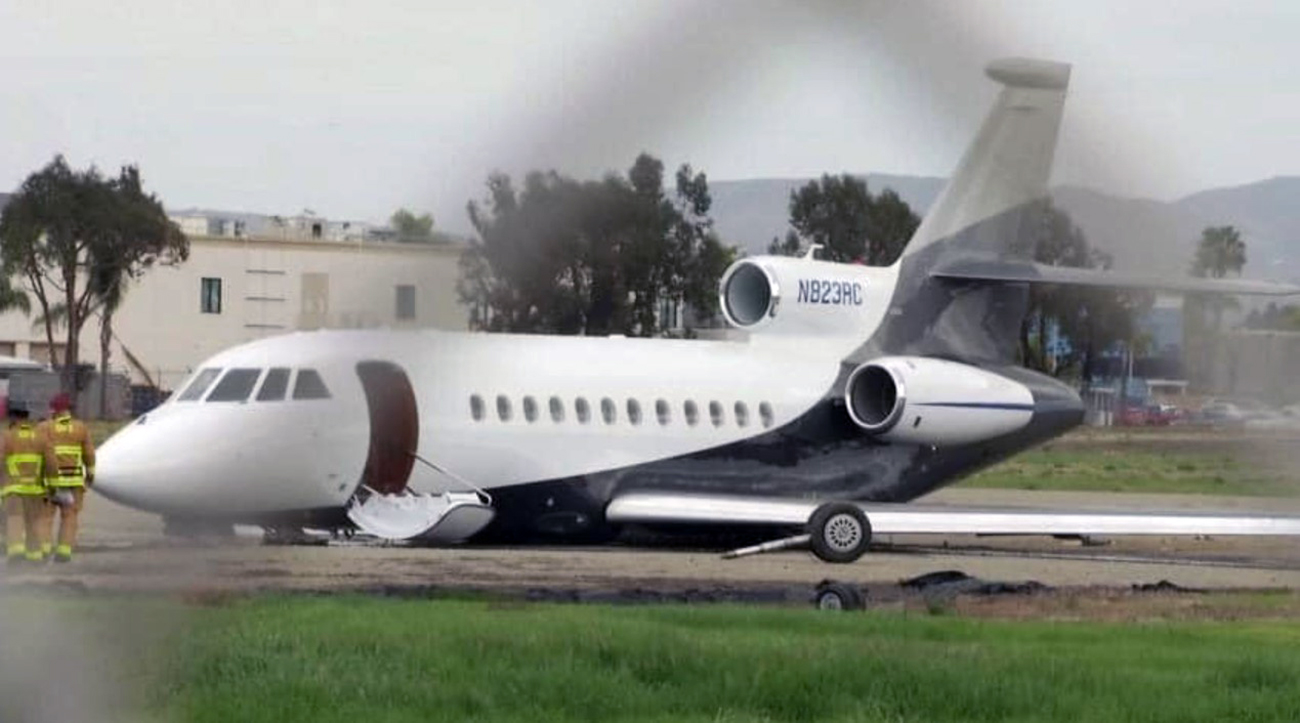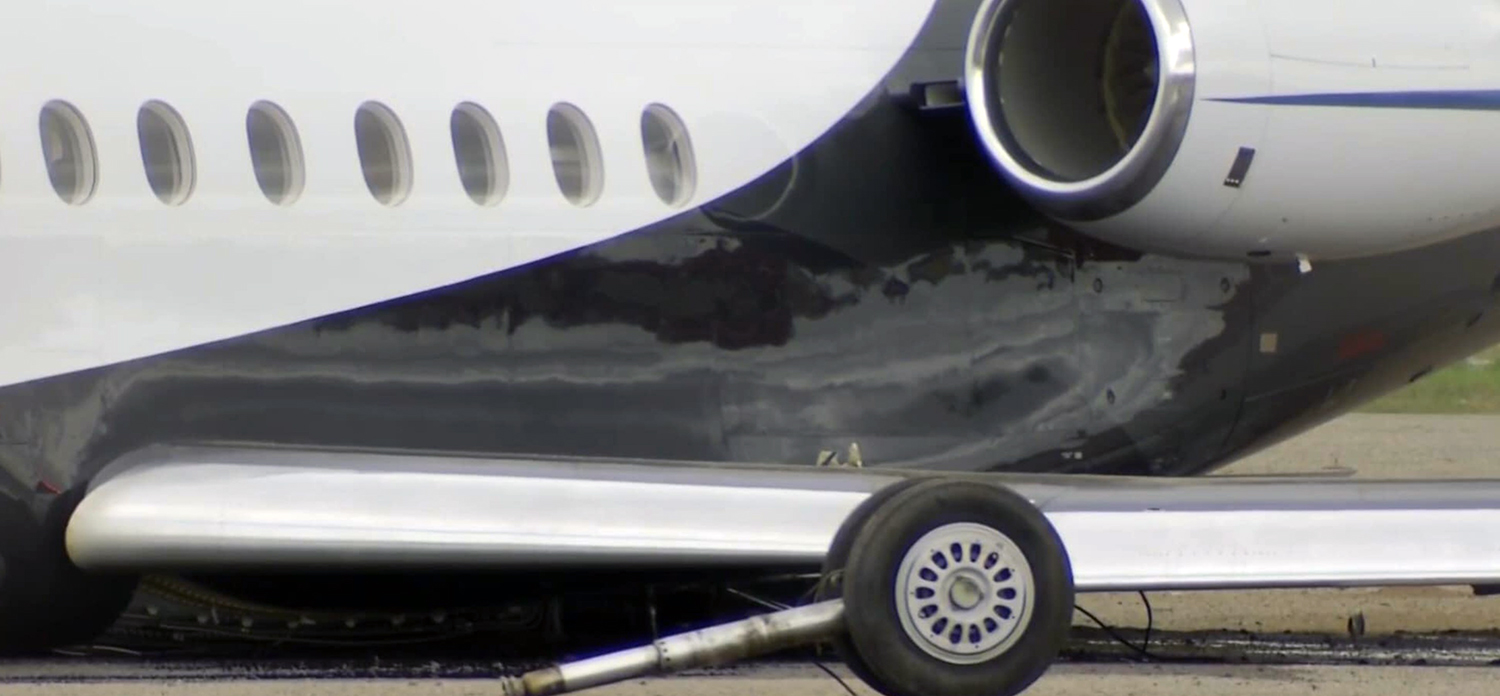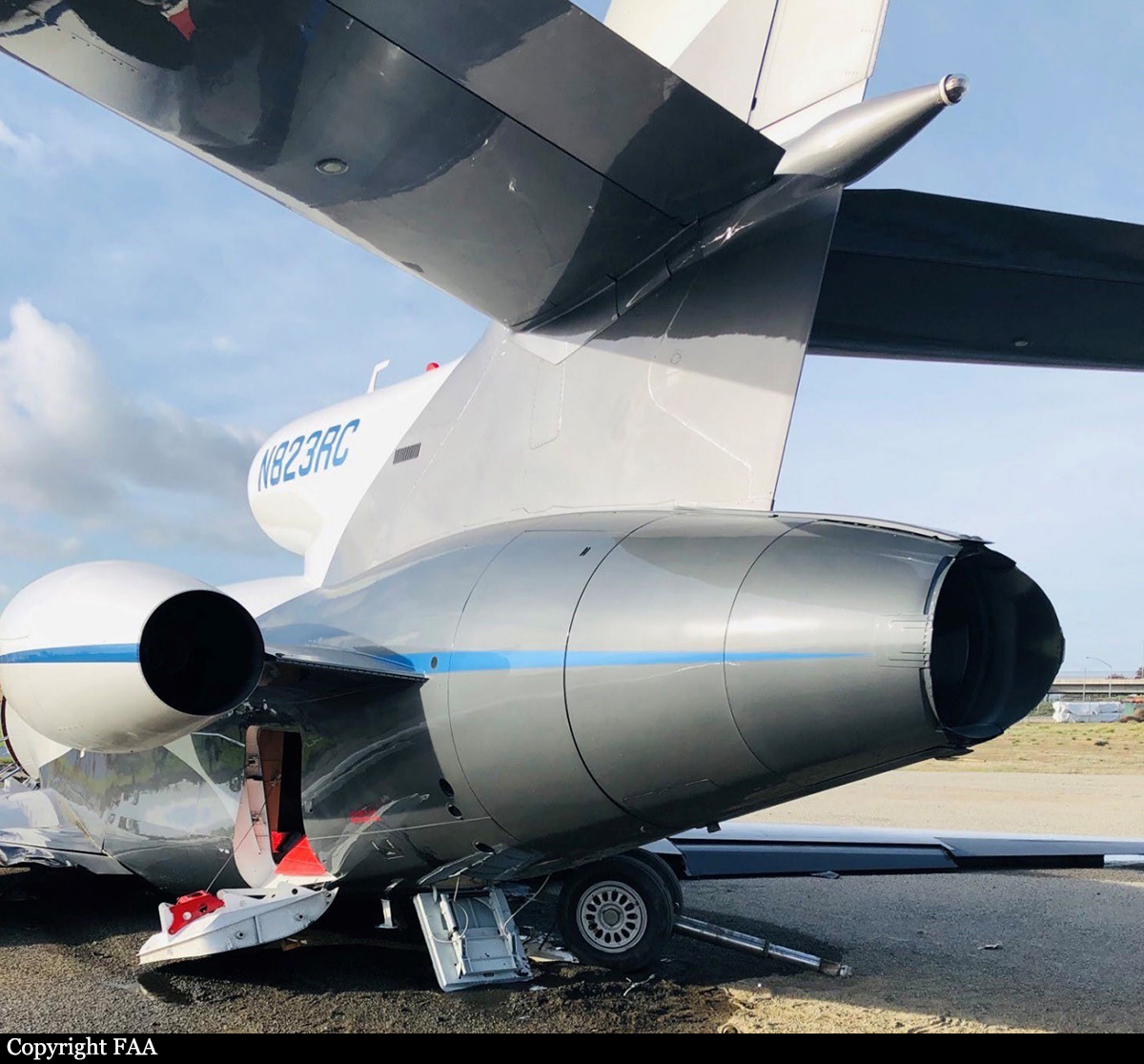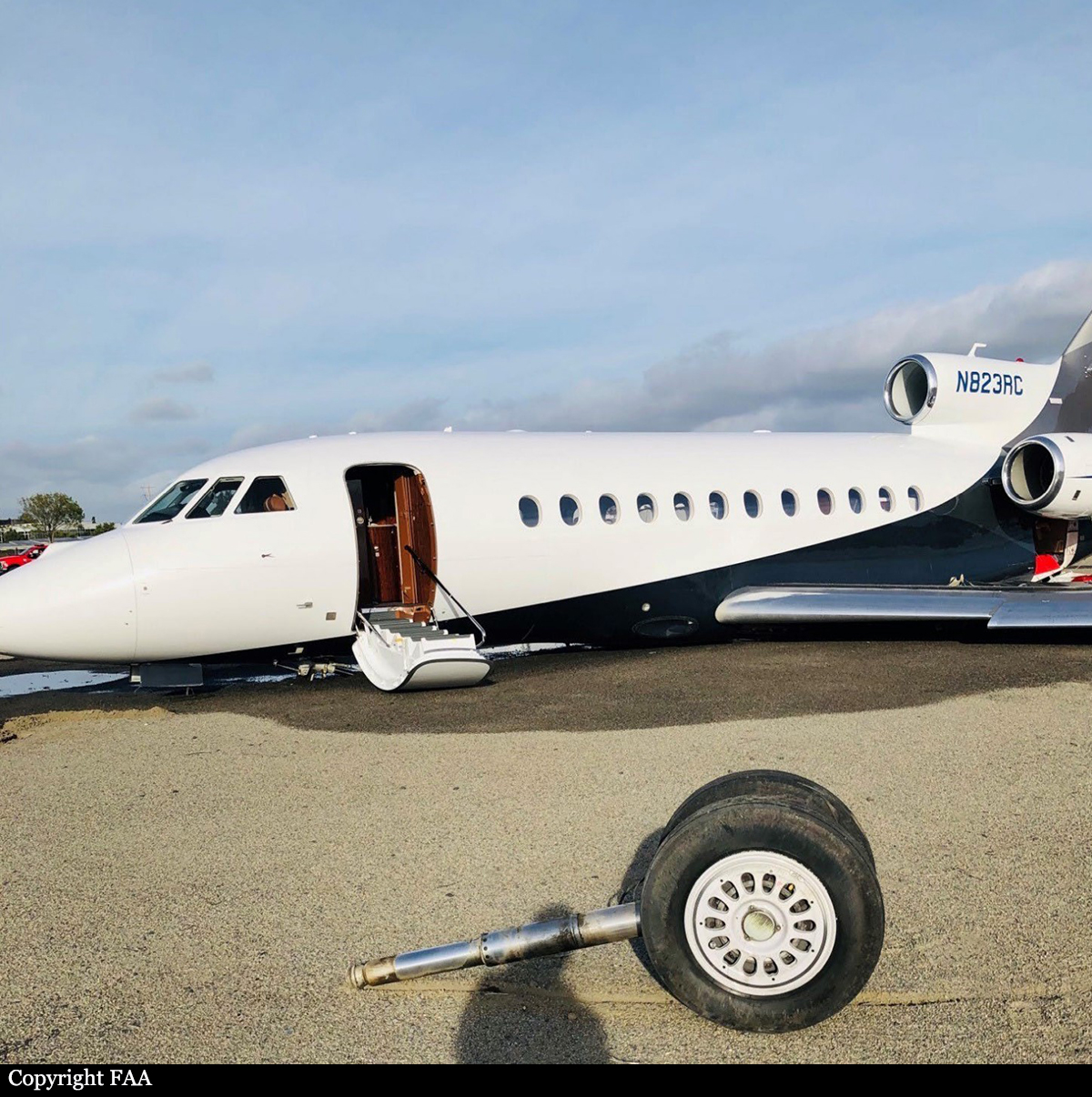Crash of a Dassault Falcon 900EX in San Diego
Date & Time:
Feb 13, 2021 at 1150 LT
Registration:
N823RC
Survivors:
Yes
Schedule:
San Diego - Kona
MSN:
201
YOM:
2008
Crew on board:
3
Crew fatalities:
Pax on board:
2
Pax fatalities:
Other fatalities:
Total fatalities:
0
Captain / Total hours on type:
1.00
Copilot / Total hours on type:
17
Aircraft flight hours:
2914
Circumstances:
The flight crew was conducting a flight with two passengers and one flight attendant onboard the multiengine jet airplane. The flight crew later stated that at rotation speed, the captain applied back pressure to the control yoke; however, the nose did not rotate to a takeoff attitude. The captain attempted to rotate the airplane once more by relaxing the yoke then pulling it back again, and, with no change in the airplane’s attitude, he made the decision to reject the takeoff by retarding the thrust levers and applying maximum braking. The airplane overran the end of the runway onto a gravel pad where the landing gear collapsed. Continuity was confirmed from the flight controls to the control surfaces. No mechanical anomalies with the engines or airplane systems were noted during the investigation that would have precluded normal operation. A review of performance data indicated that the flight crew attempted to takeoff with the airplane 2,975 lbs over the maximum takeoff weight (MTOW), a center of gravity (CG) close to the most forward limit, and an incorrect stabilizer trim setting. The digital flight data recorder (DFDR) data indicated that the captain attempted takeoff at a rotation speed 23 knots (kts) slower than the calculated rotation speed for the airplane at maximum weight. Takeoff performance showed the departure runway was 575 ft shorter than the distance required for takeoff at the airplane’s weight. The captain, who was the pilot flying, did not hold any valid pilot certificates at the time of the accident because they had been revoked 2 years prior due to his falsification of logbook entries and records. Additionally, he had never held a type rating for the accident airplane and had started, but not completed, training in the accident airplane model before the accident. The first officer had accumulated about 16 hours of flight experience in the make and model of the airplane and was not authorized to operate as pilot-in-command. The airplane’s flight management system (FMS) data were not recovered; therefore, it could not be determined what data the flight crew entered into the FMS that allowed the airspeed numbers to be generated. The investigation revealed that had the actual performance numbers been entered, a “FIELD LIMITED” amber message would have illuminated warning the crew that the MTOW was exceeded, and airspeed numbers would not have been generated. Therefore, it is likely that the crew entered incorrect data into the FMS either by manually entering a longer runway length and/or decreased the weight of the fuel, passengers, and/or cargo.
Probable cause:
The flight crew’s operation of the airplane outside of the manufacturer’s specified weight and balance limitations and with an improper trim setting, which resulted in the airplane’s inability to rotate during the attempted takeoff. Contributing to the accident, was the captain’s lack of proper certification and the crew’s lack of flight experience in the airplane make and model.
Final Report:










